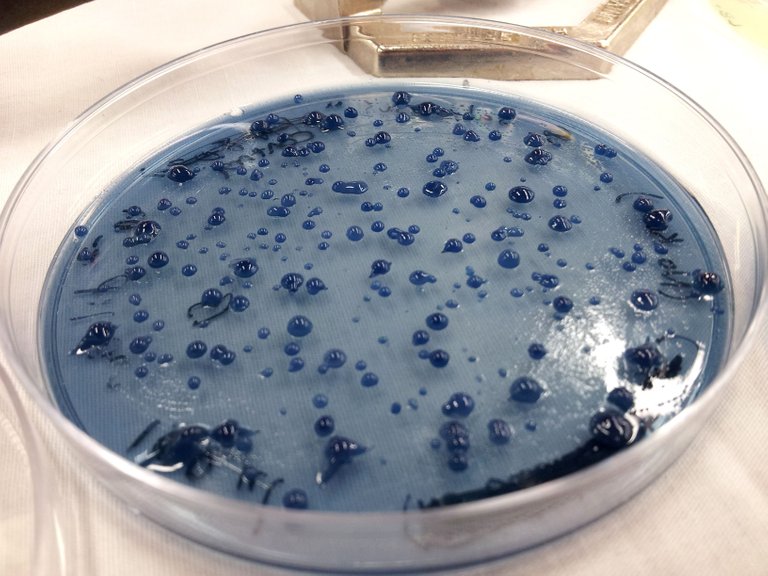Have you ever wondered what bacteria live, breed, and shit in your mouth? Our oral microbiome is teeming with hundreds of different species of bacteria, but today I would like to introduce you to one of them in particular, along with our designs to engineer it into a cavity fighter: Streptococcus salivarius.
Belonging to the streptococcus family these bacteria form linear chains through division along a cellular axis; think about a microbial conga line. While these critters divide to form chains, they can also generate biofilms that lead to sticky aggregations of cells that grow on solid surfaces — dental plaque is an example of a multi-species biofilm. When S. salivarius is grown on mitis salivarius agar plates the colonies take on a distinct gumdrop shape, which is blue due to the dye in the media (trypan blue) being taken up into the capsules around the bacteria. This helped us in species identification, since we had originally cultured the bacteria out of a stick of probiotic chewing gum.
"Not my gumdrop buttons!"
. salivarius is a prominent resident of the oral microbiome with high population numbers and numerous roles as a commensal organism and little cause for concern as a pathogen. S. salivarius subspecies are known to be part of healthy oral flora, and can produce small peptide compounds called bacteriocins that inhibit Streptococcus pyogenes (of "strep throat" infamy) and other bacteria such as Streptococcus mutans, which are involved in halitosis, plaque, and cavity formation [1]. Additionally, S. salivarius is armed with enzymes which can hydrolyse sugar linkages (α-1,6 glucans) formed in S. mutans biofilms; though this does not digest the difficult α-1,3 linked glucans that S. mutans forms in dental plaque. These general properties have formed the basis for Streptococcus salivarius being considered a suitable chassis for oral probiotic engineering [1].
Brush your teeth, folks...
Source: https://steemit.com/science/@molecular-wizard/meet-your-microbes-streptococcus-salivarius
Not indicating that the content you copy/paste is not your original work could be seen as plagiarism.
Some tips to share content and add value:
Repeated plagiarized posts are considered spam. Spam is discouraged by the community, and may result in action from the cheetah bot.
Creative Commons: If you are posting content under a Creative Commons license, please attribute and link according to the specific license. If you are posting content under CC0 or Public Domain please consider noting that at the end of your post.
If you are actually the original author, please do reply to let us know!
Thank You!
More Info: Abuse Guide - 2017.
TIP: Users plagiarizing the content of other Steemians make great @cheetah chow.
Ummm, I think this post already exists. https://steemit.com/science/@molecular-wizard/meet-your-microbes-streptococcus-salivarius
Please submit to steemcleaners through this link
https://steemcleaners.org/abuse-report/